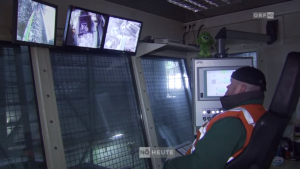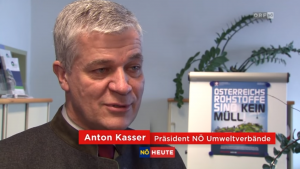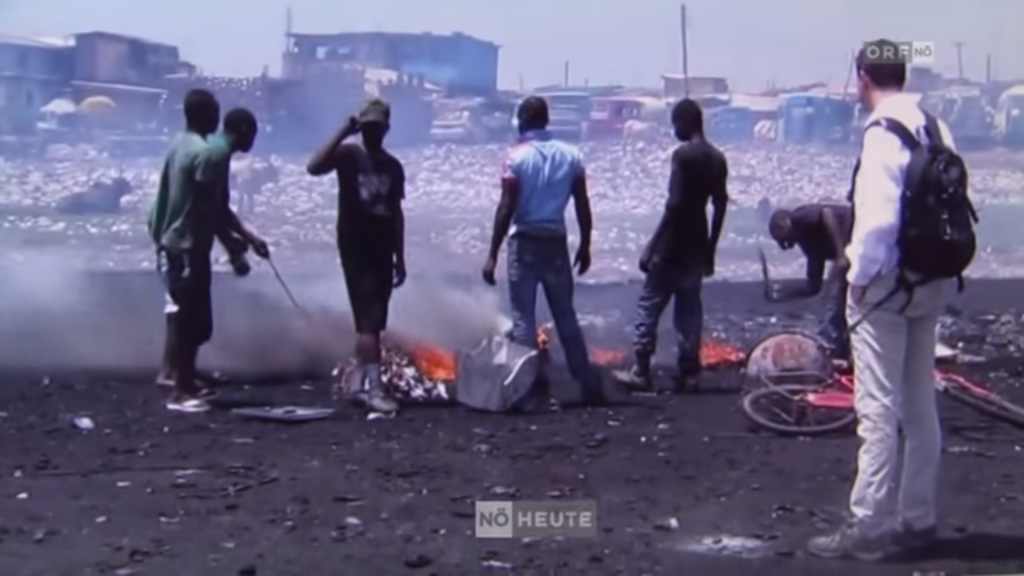In order to produce valuable secondary raw materials such as ferrous, non-ferrous metals and plastics, these E-Waste materials need to be collected at the right place. Only by proper collection of the E-Waste a proper recycling, such as what is happening at the Müller-Guttenbrunn Group sites, can be guaranteed. What can happen if E-Waste gets in the wrong hands was shown in a TV report that was produced by the ORF “Niederösterreich heute“.
The TV report explains how the average Austrian disposes of approximately 20 Kgs of E-Waste per year. It is explained how the life time of electronic products becomes shorter as new technologies and fashion quickly changes and this has been the root cause of the growing volume of E-Waste.
 The Müller-Guttenbrunn Group company in Amstetten was presented as good case and example of how E-Waste can be properly recycled and the report showed the Müller-Guttenbrunn developed and patented smasher, in which not only the hazardous components of the E-Waste are extracted and properly disposed of but in which also highly valuable parts such as printed circuit boards are yielded. What follows is a specialized shredder for E-Waste for further proper treatment in which 95% of the material is recovered.
The Müller-Guttenbrunn Group company in Amstetten was presented as good case and example of how E-Waste can be properly recycled and the report showed the Müller-Guttenbrunn developed and patented smasher, in which not only the hazardous components of the E-Waste are extracted and properly disposed of but in which also highly valuable parts such as printed circuit boards are yielded. What follows is a specialized shredder for E-Waste for further proper treatment in which 95% of the material is recovered.
 The president of the Waste Management Associations of Niederösterreich Mr. Anton Kasser explained how the collection takes place and how important it is that the consumers return the E-Waste to the proper collection points for E-Waste, which are available everywhere. Only then a proper recycling can be guaranteed.
The president of the Waste Management Associations of Niederösterreich Mr. Anton Kasser explained how the collection takes place and how important it is that the consumers return the E-Waste to the proper collection points for E-Waste, which are available everywhere. Only then a proper recycling can be guaranteed.
An estimated quarter of the annual volume however gets astray. This can have a multitude of reasons as Mr. Kasser explained. Often illegal waste collectors leave messages in households that they collect the E-Waste free of charge or it can happen that these collectors simply wait at the waste collection points to take E-Waste away from the people just before they visit the E-Waste collection points. And he continues to explain how important it is to keep this input for the production of secondary raw materials in the country.
The report continues with a description of the mechanism of the illegal routes that these illegally collected E-Waste can follow. Often these illegally exported E-Waste materials are exported as second hand material to West-Africa or to countries in the Far-East, where this material is traded.
The material is sold has second hand equipment without guarantee and of it does not work an attempt might be made to repair the appliances and if it is clear that nor repair is possible it will end up in one of the open landfills, where many people will try to recover some of the material at the expense of very serious environmental damage. Burning of the cables’ insulation to recover some copper will result in dioxin emissions as well as the open air burning of the valuable plastics.
The Waste Management Associations as well as recyclers and authorities as well as other stakeholders have created a platform to actively counter these illegal exports. The actions set by this platform start to show first positive results. The collection of E-Waste just before the Waste Collection Points has been stopped with the help of the authorities and the police. But there still is work to be done as Mr. Kasser explained – some of the trade of electronics continues to sell the E-Waste to these small “Waste Brigades” as he calls these illegal waste collectors. There still is work to do for the platform.






